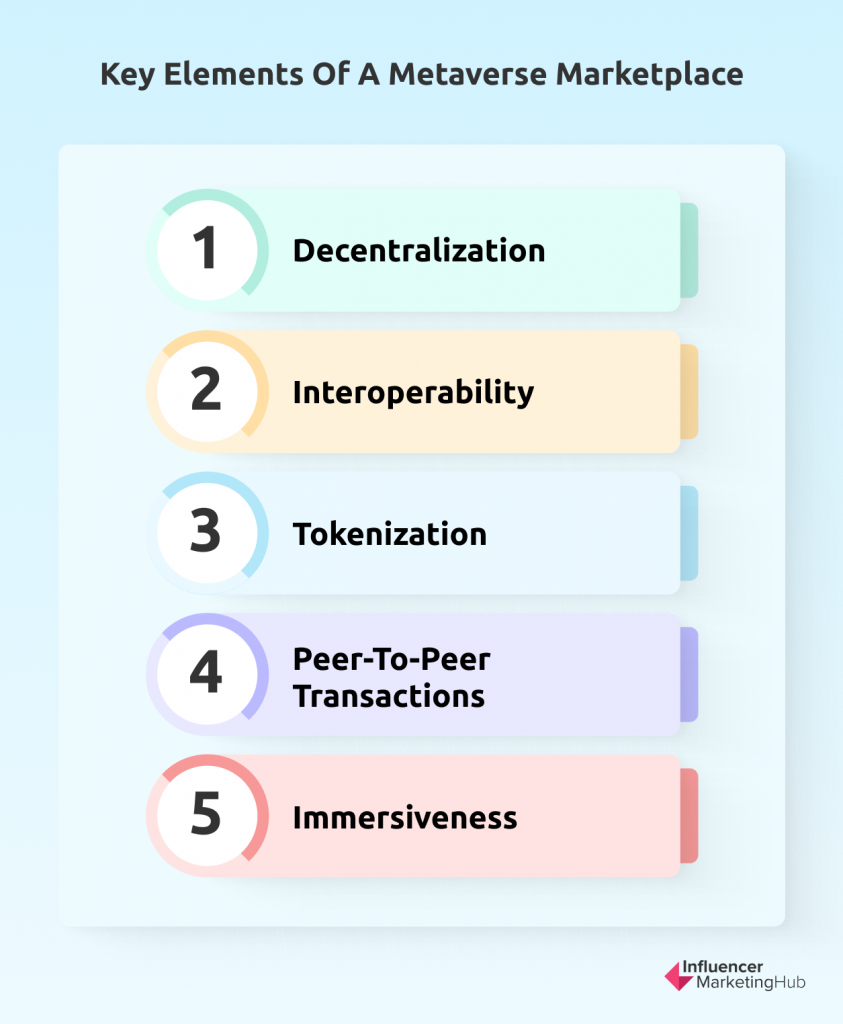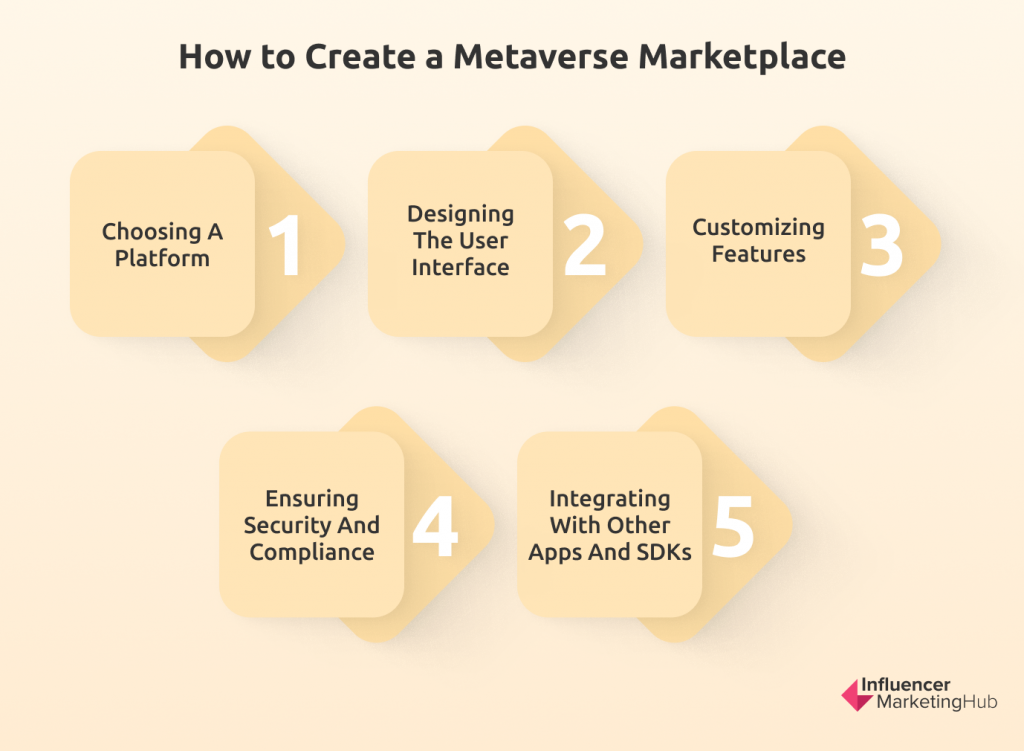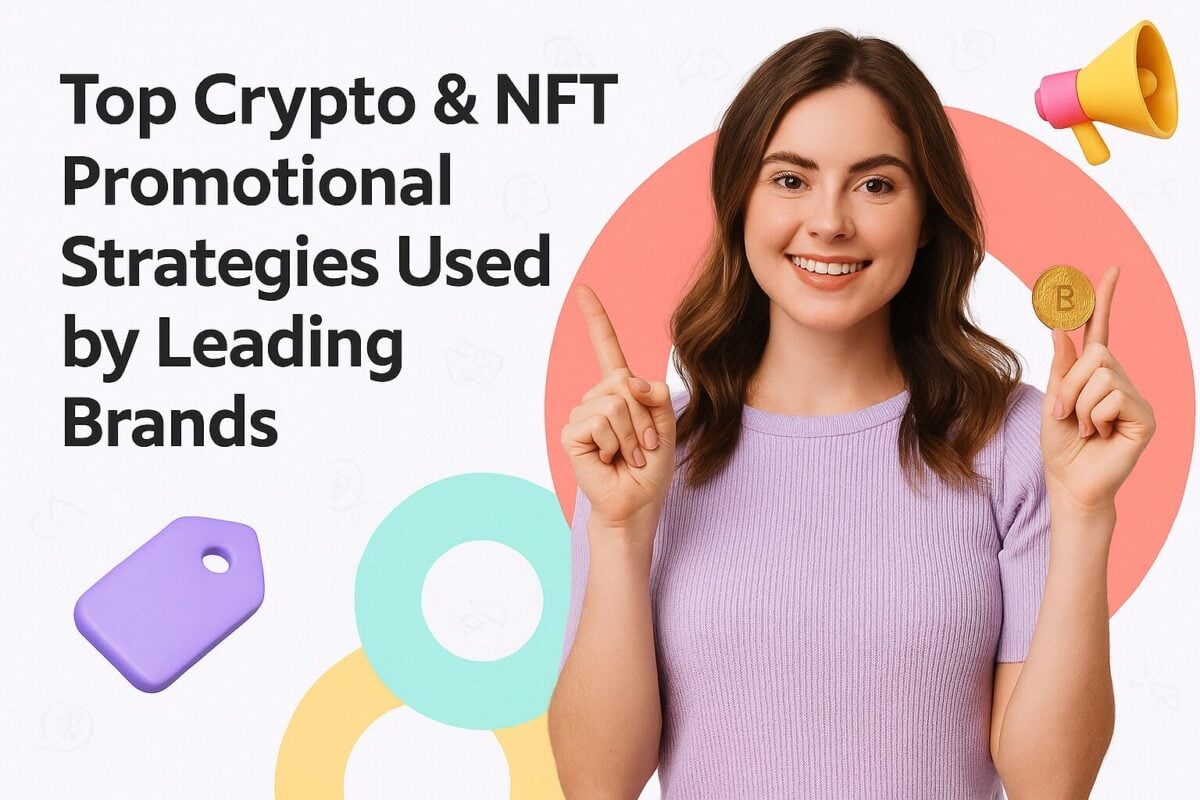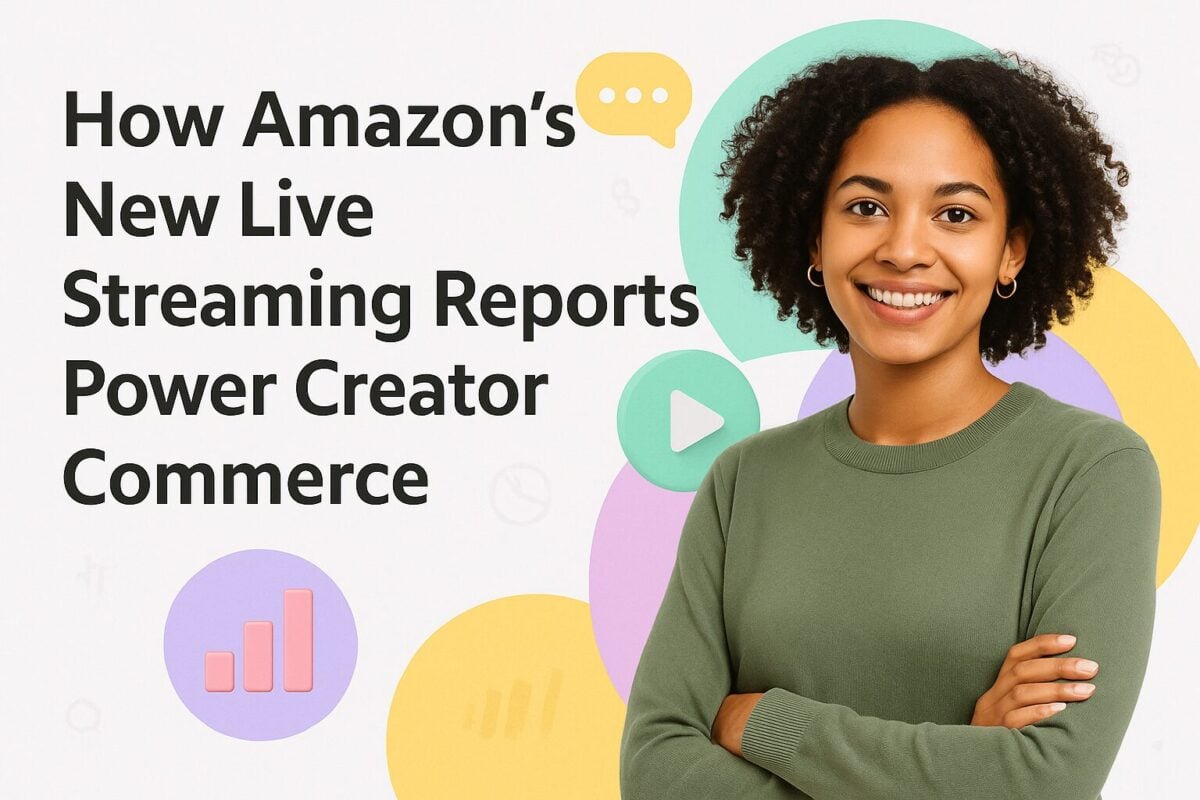Although still in its early stages, the metaverse is already developing in ways that impact virtually every sector of society. Understanding the potential it brings in shaping our future, the World Economic Forum even launched a multistakeholder initiative, Defining and Building the Metaverse, to accelerate the development of governance frameworks and strengthen the value creation of the metaverse. With global brands, multinational corporations, and various organizations in different sectors joining the initiative, it is apparent that the metaverse is not just a trend.
In the business sector, we see the metaverse influencing every aspect of business operations. Today, we already see brands leveraging the metaverse to enhance their marketing strategy. One way to jumpstart your metaverse journey is to take part in metaverse marketplaces.
The Ultimate Guide to Metaverse Marketplaces:
- What is a Metaverse Marketplace
- Why Businesses Should Consider Implementing a Metaverse Marketplace
- Key Elements of a Metaverse Marketplace
- How to Create a Metaverse Marketplace
- Getting Help in Creating Your Metaverse Marketplace
- Emerging Metaverse Marketplaces to Watch Out For
- 1. Voxels
- 2. Metahero
- 3. Xanalia
- 4. Nakaverse
- 5. MetaLaunch
What is a Metaverse Marketplace
A metaverse marketplace is a platform trading digital assets such as virtual lands, in-game assets, and other non-fungible tokens. All transactions done on the platform are based on blockchain technology, and all NFTs can be used and transferred across the entire metaverse. For brands, metaverse marketplaces offer a way for them to enable consumers to explore products and services interactively.
Most metaverse marketplaces today focus on NFT art and gaming assets. They allow users to buy, sell, or trade NFT art, digital images, GIFs, audio, video, and gaming assets. They also let users attend virtual galleries, explore game previews, attend presentations, and join live auctions through their avatars.
There are also metaverse marketplaces that enable buying and selling virtual real estate using either real-world money or cryptocurrencies. Some users invest in such lands and sell them for a higher price as the value of the virtual community rises.
As a business enterprise, you can purchase your piece of digital land where you can set up a virtual shop. You can offer brand NFTs, tokens, access to events, and other digital items. You can also use your virtual land to interact with metaverse users and provide them with unique online experiences.
Why Businesses Should Consider Implementing a Metaverse Marketplace
Along with its rebranding as Meta, Facebook spent 10 billion dollars to start the development of its metaverse solution in 2021. Early this year, Microsoft also broke records investing in a massive 69-billion-dollar acquisition deal that will usher the company into the metaverse.
Then there’s also the increasing number of global brands, including Gucci, Nike, and Coca-Cola, making their presence felt in the metaverse. These data should be enough to convince any business owner that the metaverse is worth exploring for future growth.
Some more specific impacts of getting your brand in the metaverse marketplace are having a wider scope of influence, increased brand awareness, and better engagement. The metaverse—not restricted by geographical limitations—lets you reach a wider audience and increase brand awareness on a global scale.
As the metaverse enables immersive experiences, it also enhances customer engagement which subsequently leads to brand loyalty. The unique experiences you can offer in your metaverse marketplace also help you respond to the evolving digital demand and provide more value to your consumers. Another way the metaverse enhances engagement is by making gamification possible.
Investing in the metaverse also leads to sustainable growth. A report on industry trends shows that 93 percent of global consumers agree that technology is our future. Moreover, most consumers interested in the metaverse are digital natives of the Gen Z and Millennial generations. These are the future audiences who would become primary decision makers in purchasing commodities. The earlier you embark on your metaverse journey, the longer time you have to build lasting relationships with these consumer groups.
Indeed, the metaverse opens vast opportunities for businesses. The potentials for growth are infinite regardless of your industry. With this in mind, the next step is to penetrate the metaverse marketplace.
Key Elements of a Metaverse Marketplace
Before creating a metaverse marketplace or entering one, you must first understand the basic principles that govern them. Here are the key features essential to the success of a metaverse NFT marketplace.

1. Decentralization
Because it is built on blockchain technology, the architecture of a metaverse marketplace is decentralized. This means that it is not governed by a single authority. Instead, the marketplace is inherently run by multiple processors creating, processing, and storing data on a distributed ledger. This gives marketplace users control over the transactions and ensures confidentiality, privacy, and security.
2. Interoperability
Interoperability is a fundamental characteristic of the metaverse. It unifies systems and economies across different platforms allowing users to engage in multiple marketplaces without restrictions.
3. Tokenization
One of the lures of the metaverse NFT marketplace is its capacity to sell virtual assets for real-life currencies. Tokenization makes this possible by enabling users to tokenize their assets, establish individual ownership, and sell them in the marketplace.
4. Peer-to-Peer Transactions
P2P is among the technologies that form the foundation of blockchain technology. So, the metaverse marketplace will naturally be built upon P2P technology as well. All transactions are coded and transferred with a smart contract to safeguard users against hackers and security breaches.
5. Immersiveness
What makes a metaverse marketplace unique from digital marketplaces today is its immersive environment. It allows users to interact with other users and the virtual environment the same way they do in real life.
How to Create a Metaverse Marketplace
Creating a metaverse marketplace is a complex process that requires an understanding of blockchain technology, software development, and other technical knowledge. If you already have an internal development team, have them start a metaverse project for your company. If not, you can outsource a metaverse development provider.
To understand what happens during the design and creation of a metaverse marketplace, here’s a quick preview of the basic steps involved.

1. Choosing a platform
You need a platform to run your marketplace in the metaverse. You can choose from one of the existing marketplaces on the web. If you have ample resources, you can build your platform. Consider your goals for your marketplace to determine which platform has the functionalities needed to achieve them.
2. Designing the user interface
The user interface is what will make you stand out from the competition. More than the aesthetic value, your goal in designing the interface should be ease of use to create seamless experiences for all users. Your customers must be able to enjoy browsing through your marketplace and not be overwhelmed by complex features.
3. Customizing features
To improve customer satisfaction, include features that streamline the buyer’s journey in your marketplace. Provide multiple payment options and secure wallet transactions. Design the architecture for interoperability to make sure that your products can be listed on different platforms and integrate VR components, user interaction modules, and other features for smooth functioning.
4. Ensuring security and compliance
Safeguard your digital assets and customers’ information by ensuring security and compliance with privacy regulations. Set up an IPFS storage for user metadata and a dedicated database for transactional information. Program smart contracts according to the specific functions of your metaverse marketplace.
5. Integrating with other apps and SDKs
The smooth functioning of your metaverse marketplace depends on how well all features and programs integrate. It is crucial to integrate payment gateways, electronic wallets, browser extensions, and other applications that make sure your marketplace flows seamlessly.
Getting Help in Creating Your Metaverse Marketplace
The previous section gives us a preview of the complexities involved in metaverse marketplace development. There are many more steps involved that require deep coding knowledge and highly-specialized skills. If the development process is beyond your capabilities, you have several options in implementing your own metaverse marketplace.
1. Build your in-house team
Having your development team gives you more control of your metaverse development project. You can monitor or oversee the entire process from design to implementation. It’ll also be easier for you to have features iterated to meet your business needs.
However, it takes much time, effort, and money to build one. You’ll need to find and hire specialists with expertise in the metaverse and related technologies. Since you’ll be offering them full-time positions, you will also need to provide full salaries, social packages, and all other benefits your regular employees receive.
2. Hire specialists and consultants
If you already have a dedicated IT team with developers on board, there is no need to build a team from scratch. What you can do instead is to augment your team by hiring specialists on a consultancy basis. Look for experts in NFT, blockchain, and the metaverse who can assist your IT team in creating your metaverse marketplace.
3. Outsource metaverse marketplace development
If you lack manpower, equipment, and other resources needed to launch your business into the metaverse, you can always outsource your metaverse project to a development company. Look for one that has expertise in metaverse development, XR solutions, and blockchain technology. Ask for their portfolio to see what metaverse solutions they have provided for other businesses.
Aside from getting a well-developed platform, outsourcing the creation of your metaverse marketplace enables you to focus on your core business operations.
Emerging Metaverse Marketplaces to Watch Out For
Established NFT Marketplaces such as those in Decentraland, Roblox, and Epic are already evolving into metaverse marketplaces. They are great places to start building a following for your business. They also offer a more cost-efficient way to enter the market and boost your metaverse marketing strategy.
Aside from popular NFT marketplaces, there are also a few less-known ones that are worth watching out for.
Voxels, previously known as Cryptovoxels, now support virtual reality experiences. This metaverse platform has a large marketplace where users can buy and sell virtual land, digital collectibles, wearables, and game assets. The Voxels marketplace lets users create their own collections and build their signature avatars. Aside from parcels of land, you can offer virtually anything from pet accessories to luxury vehicles. The Voxels community also hosts regular virtual events where users can interact with each other. Metahero is launching its metaverse marketplace soon. The WDW Marketplace is designed to serve as the interface for buying and selling 3D objects. The platform will be using Metahero’s HERO token in all its transactions. In the WDW Marketplace, you can scan your products and turn them into 3D digital images. You can then offer them as licensed property to outside developers. You can also use them to create NFTs to sell, trade, or offer for auction. XANALIA, one of the leading NFT marketplaces, is also gearing its transition into the metaverse. Their Virtual Reality Metaverse app and AR app are already in the works. Once launched, these will enable metaverse users to shop for wearables, art, land, avatars, and other NFTs they can use in their metaverse worlds. Nakaverse is a platform developed by the makers of the Nakamoto token. It is designed to be a metaverse platform with a real in-game economy. Users can purchase virtual land, game assets, and NFTs in the Naka marketplace. Since the Nakaverse is an immersive virtual world, its marketplace will likely become a fully immersive platform where users can shop virtually as avatars. The MetaLaunch Metaverse Marketplace is set to be launched by Asva Explorers. The platform intends to be a launchpad for INOs, virtual auctions, and other next-gen metaverse projects. It will be a gamified marketplace with a suite of MetaFi applications. Users can rent, trade, or auction virtual ownership assets from gaming and metaverse projects.1. Voxels

2. Metahero

3. Xanalia

4. Nakaverse

5. MetaLaunch

Open New Possibilities, Open Your Metaverse Marketplace
The metaverse is still in its infancy, but it shows vast potential for growth in almost all industries. Eventually, the metaverse will be a place where our physical and digital lives converge. For businesses, it can be a platform for creating outstanding customer experiences that bring value to both consumers and businesses.
To leverage the technology and the benefits it brings, we must embrace it and explore it further. Investing time, effort, and money in the metaverse now can give us a head start towards the future.


